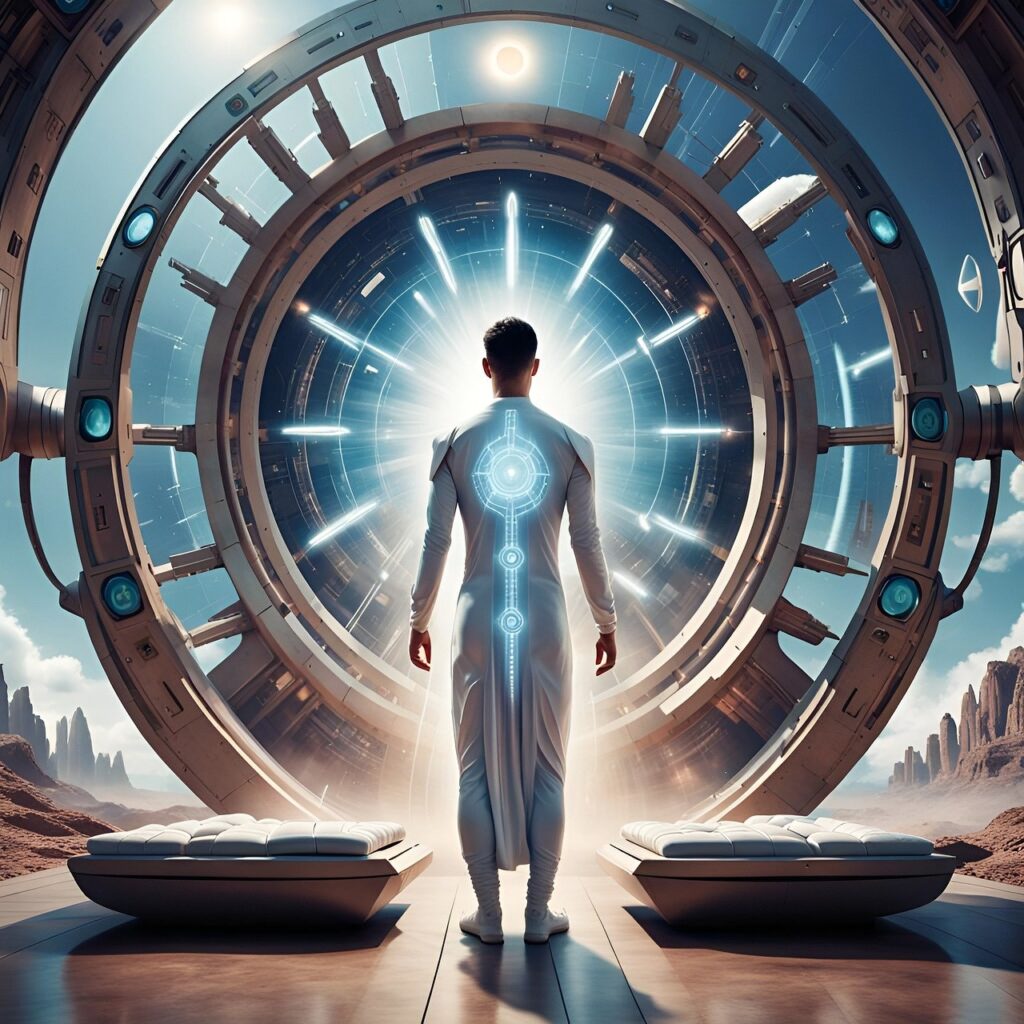In today’s rapidly changing world, combining technology and artistic endeavors has sparked a profound revolution in creativity and expression. As digital tools and platforms expand unprecedentedly, artists cross an expansive and limitless canvas where the division between the material and virtual realms dissolves seamlessly. This article explores how technology and art are connected in today’s world, exploring the many opportunities and obstacles of living in the digital age.

1. The Evolution of Artistic Expression:
The emergence of digital technology has democratized the creation and development of art, ushering in a new epoch of exploration and innovation. Artists now wield an array of digital mediums, ranging from sophisticated digital painting software to immersive virtual reality experiences. This accessibility has emboldened creators from diverse backgrounds to transcend the boundaries of conventional artistic techniques and engage with global audiences on an unprecedented scale. Notably, platforms like DeviantArt and ArtStation have emerged as hubs for digital artists, offering a worldwide showcase for their work and fostering vibrant online communities. According to a study published in The Guardian, the popularity of digital art has risen in recent years, with an increasing number of artists embracing digital tools to create and share their work.
Moreover, the democratization of art through technology has led to the emergence of novel artistic movements and genres. Digital art forms such as pixel art, generative art, and glitch art have gathered action, challenging traditional standards of medium and representation. Artists now have the liberty to manipulate digital data, which leads to dynamic and interactive creations that blur the boundaries between the virtual and physical domains. This shift towards digital mediums broadens the horizons of artistic expression and fosters collaborative endeavors and experimental exploration.
2. Collaboration and Community Building:
In the digital epoch, collaboration, and community building have metamorphosed into indispensable facets of the artistic odyssey. Online platforms and social media networks serve as virtual conduits for artists, cultivating a sense of collective ingenuity. Collaborative art endeavors, such as the Google Art Project and Adobe Creative Cloud, converge artists from different backgrounds to merge digital artworks and installations. Furthermore, virtual reality platforms like VRChat and AltspaceVR proffer immersive arenas for artists to exhibit their creations in interactive showcases, forging real-time connections with audiences. A recent article in Wired magazine spotlighted the expanding trend of virtual art galleries, where artists showcase their works in digital spaces accessible worldwide, revolutionizing the dynamics of art consumption and interaction.
Additionally, technology transcends geographical constraints, enabling artists to collaborate across continents and time zones. Through virtual collaboration tools and online platforms, artists converge to exchange ideas, resources, and inspiration in real time. This interconnectedness fosters a global community of artists who collaborate, support and inspire one another, enriching the tapestry of artistic expression in the digital age.
3. Challenges and Ethical Considerations:
Despite the transformative potential of technology, the digital space presents an array of challenges and ethical quandaries for artists to navigate. Issues such as copyright infringement, digital piracy, and data privacy imperil the integrity of artistic pursuits. In response, legislators and policymakers have endeavored to address these concerns through regulatory frameworks such as the General Data Protection Regulation (GDPR) in the European Union and the Digital Millennium Copyright Act (DMCA) in the United States. Moreover, emerging technologies such as artificial intelligence engender ethical quandaries regarding algorithmic involvement in the creative process and the specter of bias in automated decision-making. A recent report from the World Intellectual Property Organization (WIPO) underscores the necessity of updated copyright laws to safeguard artists’ rights in the digital sphere, advocating for international collaboration to combat digital piracy and online infringement.
Furthermore, the digital background engenders debates surrounding ownership, authorship, and authenticity in art. With the expansion of digital reproductions and the facile dissemination of artworks online, artists confront challenges in asserting control over their creations and ensuring equitable compensation. Blockchain technology presents a potential solution to these difficulties, furnishing a transparent and established register to verify the authenticity and provenance of digital artworks. By leveraging blockchain-based platforms, artists can establish digital certificates of authenticity, trace the ownership history of their works, and safeguard their rights in the digital realm.
4. Innovation and Adaptation:
Confronted with these challenges, artists leverage technology as a portal for innovation and adaptation. From avant-garde digital art installations to immersive augmented reality experiences, creators embrace cutting-edge technologies to craft captivating and immersive artworks. Blockchain technology, for instance, revolutionizes the art market by providing a secure and transparent mechanism for verifying the authenticity and ownership of digital creations. All at once machine learning algorithms empower artists to generate intricate patterns and designs, ushering in novel artistic exploration and experimentation avenues. A recent article in The New York Times delves into the intersection of art and technology, spotlighting contemporary artists who push the boundaries of traditional mediums through digital tools and techniques.
Moreover, technological advancements such as virtual reality (VR) and augmented reality (AR) redefine the consumption and experience of art. VR immerses viewers in digital realms, enabling them to interact with artworks in three-dimensional space. AR overlays digital content onto the physical world, blurring the boundaries between reality and imagination, and offering viewers a seamless fusion of the digital and physical realms.
As we traverse the vast digital expression and development, the symbiotic relationship between technology and art unveils many possibilities and challenges. By embracing collaboration, grappling with ethical dilemmas, and fostering innovation, artists harness the transformative power of technology to push the boundaries of artistic expression and redefine the artistry of the digital age. As we navigate this dynamic terrain, the fusion of creativity and technology continues to shape and redefine the contours of artistic endeavor, inviting us to embark on an exhilarating journey of exploration and discovery.